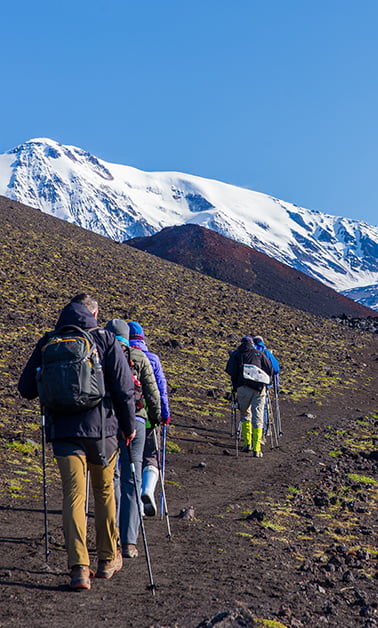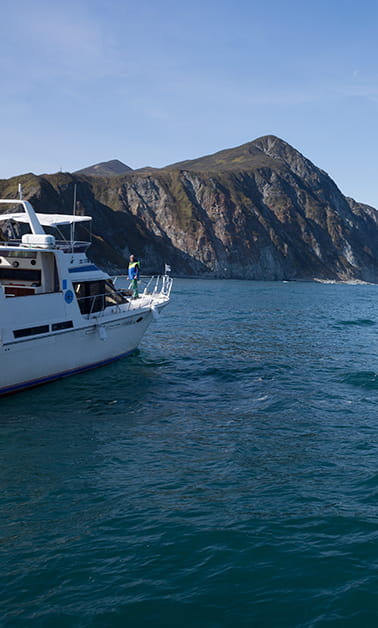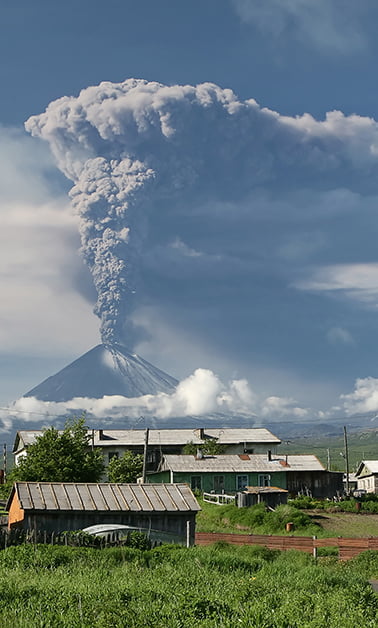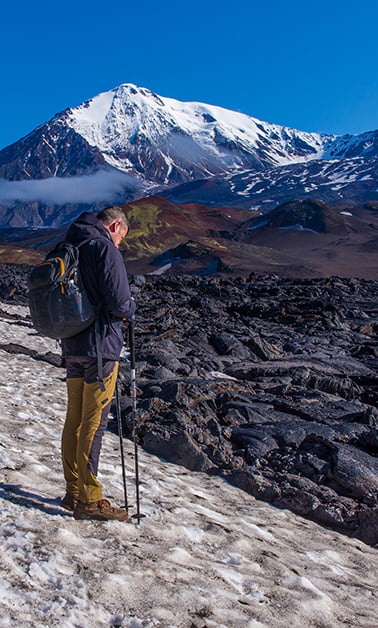
Milkovo village
The Milkovo village in Kamchatka is a favourable settlement, through which the Petropavlovsk-Kamchatsky-Ust-Kamchatsk highway passes. This village has a long interesting history, and now lives an active life.
Milkovo is located on the highway Petropavlovsk-Kamchatsky – Ust-Kamchatsk, the distance to the capital of the region is 300 km. Hiking routes in a northeastern direction will include a stop in Milkovo near the Café Taezhnoye. Kirov Street, where the cafe is located, is the main one in the village. Milkovo is a well-maintained town, actually a village with a good road; there is everything for a normal life. People here are mainly engaged in forestry and agriculture. The total population is about 8,000 people.
The climate here, as elsewhere in Kamchatka, is quite severe; summers are usually rainy and cold, although there are days when heat prevails. The Milkovo District is considered the warmest one in Kamchatka in summer. However, the average annual temperature does not rise above 3° below Celsius. The local climate is continental rather than oceanic since Milkovo is located at a considerable distance from the Ocean.

The History of Milkovo
For the first time, Russians appeared on the territory of the current settlement at the end of the XVII century. It was a group of six dozen path-breakers headed by Vladimir Atlasov. The Yukagirs also came with them. The Cossacks set up a burg there, about 15 km from the current village, and called it Verkhne-Kamchatsky. It happened in 1697 as evidenced by a memorial sign erected in 1970 on the site of the oldest Kamchatka burg. Stepan P. Krasheninnikov, who arrived on the peninsula in 1737 on a “Fortuna” sailing ship, gave the first written evidence in his “Description of the Land of Kamchatka”.
At that time, Empress Anna Ioannovna ruled, she issued a decree on the development of Kamchatka. For this purpose, people were brought to these distant lands, and they began to build settlements. In 1743, five families built houses on the banks of the Imcherek River near the old burg Verkhne-Kamchatsky. The river was renamed as Milkovushka, and the village was called Milkovo. Nearby, in the camps, the indigenous inhabitants of Kamchatka, Itelmens, lived. The new settlers managed to establish relations with the locals, and an exchange of goods and experience began. The Itelmens soon realized the benefits of settled life in wooden houses and began to settle the same way and engaged in agriculture.
The indigenous population did not know, before Russians had come, iron tools and did not deal with ore smelting. However, in the middle of the XVIII century, a merchant from Irkutsk, Semyon Glazachev, discovered iron ore in these places and began to melt it. As a result, even a plant was purpose-built in Milkovo. The quality of the obtained iron was inferior to the imported ones, the production turned out to be unprofitable, so the plant did not exist for more than 20 years. However, while it worked some needs in iron things were met on the spot.
An important agricultural event that changed the diet of the locals occurred in 1780. Potato first appeared in Milkovo. With some apprehension, people tried an unknown product, appreciated it and began to grow. What’s for wheat and rye, things were not so good. Attempts to grow them under local conditions failed. Still, the climate took its toll – cereals froze because of frosts. Mostly, the residents of Milkovo traditionally engaged in hunting and fishing. So they lived.
In the XIX century, the development of the village continued. Travelers and sailors stayed here. Thanks to the crew of the sailing ship “Nadezhda” (Hope), a hospital appeared in 1818. The sailors financed its construction and purchase of equipment. The first parish school opened here in 1870. After the establishment of Soviet power, life began to change more intensively. In the 30s of the XX century, Milkovo became the base for sled dogs training. They built a small airport and developed air transportation with Petropavlovsk-Kamchatsky. The appearance of the village itself was also transformed, two streets appeared, houses stretched out for two kilometers.
In the war years, life in Milkovo was especially difficult but the residents tried to contribute to the victory, gave their savings for the construction of military equipment, 68 Milkovo residents saw duty. A memorial was built in their honor. After the war, the development of the village was especially noticeable in the 60s, when the long-awaited highway was laid to Petropavlovsk-Kamchatsky. Now, this road is renewed. For the first time, TV came to the life of the villagers in 1975, the construction of multi-story buildings was initiated the same year.

Sightseeing and Cultural Life of Milkovo in Kamchatka
Milkovo may be interesting for tourists not only as a place where they stop during a car tour to eat and relax. There is an interesting ethnocultural center of the Kamchadals where you can see a copy of the Verkhne-Kamchatsky burg, a real yaranga, visit a museum with ethnographic exhibits and an art gallery. Museum exhibits are dedicated to the history of the region and the life of the Kamchadals. Among the artifacts, there is a genuine 18th-century bell, stuffed animals. The gallery presents works of art not only by local artists..
In the Ostrozhnaya Wall park-museum, created back in the 1980s, fairs and various events on holidays, as well as a rock festival, are held annually since 2012. On the territory, there is a monument to the pioneers and indigenous inhabitants of Kamchatka, and in the park, there are figures of the Itelmen god Khantai, who was depicted as half-man-half-fish. It was considered the patron of anglers. They put it facing the river, brought gifts to it.
There is a functional church in Milkovo. For the first time, a religious building was built here in 1754, after the establishment of Soviet power, it was closed, and only in 1995, the church reopened its doors to church members.

There are many children in the village, the Youth Center with a museum is geared specially for them. In addition to two adult libraries, there is also a children's library where various events are held. There are also conditions for sports – a stadium, a ski base, ice hockey rinks, etc. The route of the famous Berengia sled dog race runs through Milkovo.
In Milkovo District, there is a balneological zone. There are thermal and cold healing springs here. The most popular are the Upper-Shchapinskye (Tumrok) and Pushchinskye Springs. Near the village, Malkinsky Thermal Springs is another place of attraction for tourists. Milkovo is surrounded by forests and valleys, majestic volcanoes are visible in the distance. Nearby, there is the Lake Sevo located at the foot of the Vetlovaya River.
Milkovo is a small dot on the map of Kamchatka but this village attracts people.
Popular tours with Kamchatkaland
Ready-made packages for your travel and vacation in Kamchatka






